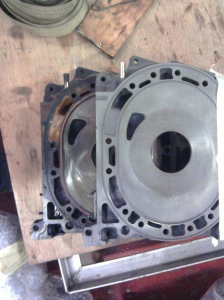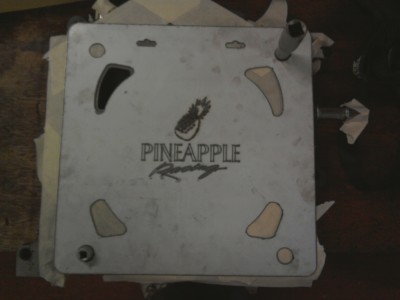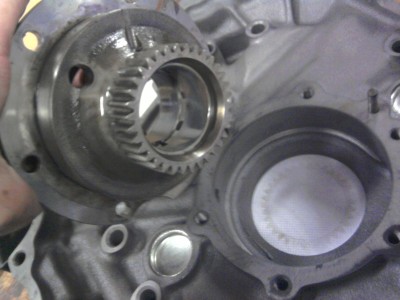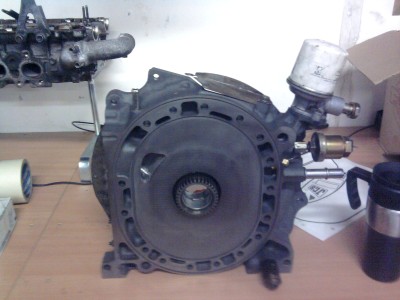Originally Posted: September 10, 2010
Hi all,
we were chatting in the shop during the week over one of John’s fit inducing cups of coffee and we had an idea. Basically we’re going to attempt to bring you some of our interesting jobs to give you an idea of what we do every week (or until we get bored of updating the blog).
So here goes the first one and apologies in advance for the poor pictures, they were taken by my phone.
Anyhoo as we all know last winter was a killer. We were having temps of -13 C down here in Kerry, pipes were bursting, houses were flooding, plumbers were laughing, batteries were dying and for those who didn’t have the proper coolant, blocks were cracking. As you can see the rear endplate here is cracked from the pressure of the expanding ice the engine and it also lost a frost penny from the front endplate.
Luckily the owner had a back-up car until funds allowed for it to be fixed (insert recession rant here). Below you can seen the old endplate versus the new, notice how the intakes are different. For rotary engines aka wankel engines (heh heh he said wankel) a relatively small increase in intake size can make huge gains in power as you can see from the streetport below. This 1.3l engine was making 320hp at 0.8 bar.
Obviously if a ported plate comes out, a ported plate must go back in. We were lucky to have a similar porting template on hand to match the profile of the port.
Just to show you that you don’t go chopping massive chunks out of the ports, this is considered a good medium sized port which would be 3mm oversized. Another few mm and you could be in danger of the corner seal dropping into or both the corner and side seals catching the port and then you’re in for a rebuild again. If you are looking for much more air flow than this you are looking at a bridge port or a peripheral port.
So after a bit of work with the sledge and chisel (only messing I’m not allowed near the sledge anymore) this is the result. I threw in a small bottle of cola to give you an idea of the size of the endplate.
See this little ******* of a dowel. Getting this ****** out of the old plate was hardest part of the job (and I still wasn’t allowed to used the sledge). It’s used to align the stationary gear (so you can bolt it in straight) which in turn keeps the rotor aligned (think of a spirograph) so therefore is handy to have (damnit).
Here we have all the bits and bobs that have to be transfered from the old plate to the new, stationary gear, tins, sensor and oil system parts. As Mr Miyagi would say wax on, wax off, although in this case it’s screw off, screw on.
Et voila! With a sprinkling of fairy dust and a liberal spreading of jam it’s all back together, just like that, it’s magic. All that’s left to do is put it back on the engine once the replacement seals come in (now where’d they hide that sledge).
Tune in again next week for more amazing adventures with the WCP crew, same bat time, same bat channel.
P.S. If you like what you see tell your friends and if you have any suggestions on what you would like to see on this blog please leave a comment (obviously it might take while depending on what jobs we have on and/or if we are too busy drinking coffee and taking the micky out of each other).










